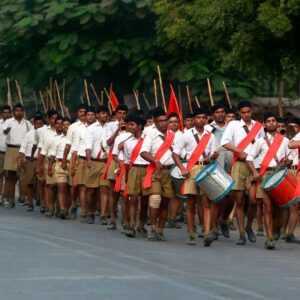Modern India since 1947 is not a new nation but the rebirth of a profound and enduring ancient civilization. In this regard India has been compared with Israel, which was also reestablished in l947, though India’s size and influence is more extensive.
India is one of the most ancient civilizations in the world with roots going back five thousand years, with a continuous literature, institutions and records. Trade with India is mentioned since ancient Egypt, Babylonia, Greece and Rome, and Columbus discovered America looking for India.
India has its own extensive set of religions, philosophies, arts and sciences that are vast, diverse and detailed in regard to all aspects of life. India’s civilization dominated Indonesia and Indochina for many centuries and its influence spread from Central Asia to Japan.
The Debate over the Idea of India
There has been a new debate about the “idea of India” and what the country represents. Some modern thinkers would like to dissociate the idea of modern India from that of ancient India. They regard India’s older history as representing only one section of India’s population and as backward in nature. They view modern India as a different type of multicultural modern state, following other principles and practices than those of older India.
Another group of thinkers – which dominated India’s independence movement – regards modern India as a continuation of older India going back to Rama, Krishna, Buddha, the Vedas and India’s dharmic traditions. Mahatma Gandhi with his idea of Ram Rajya projected this image of India in his values and even in his dress, but was only one of many independence leaders who did this.
The attempt to link modern and ancient India has been criticized by leftist and Marxist thinkers, who denounce it as a kind of Hindu majoritarianism. Yet Hindu and dharmic traditions continue to be followed by the great majority of Indians, a fact that cannot be ignored. Samuel Huntington in his famous book the Clash of Civilizations identified India and Hinduism as one of the great civilizations of the world.
India’s main influence on the modern world has occurred through its spiritual teachings and dharmic traditions of Yoga, Vedanta and Buddhism, extending to India’s traditional art, music and dance. It is this ancient or perennial India that the world recognizes as India, not the India of Delhi’s Nehruvian elite.
Failure of the Left and Socialism in India
Modern India has been dominated by the “secular socialist” idea of government, which Indira Gandhi introduced into the nation’s constitution, and Nehru had already set in motion. This created a policy of ignoring India’s magnificent past and looking at the country as post-1947 for its identity. India’s history textbooks, of which Marxist thinkers have been their main writers, have often denigrated India’s dharmic civilization.
The same constitution of modern India identifies India with Bharat – India’s ancient name going back to one of the great Vedic kings long before the time of the Buddha. Yet there is little mention of India as Bharat in the discussion of the idea of India today.
India up to 1991 followed the same type of state socialism as the Soviet Communist Block. Even today in 2016 much of the old socialist bureaucracy remains intact and is supported by media and academic groups who are also resistant to new development agendas.
Much of the left in India is regressive, looking back to the failed revolutions of the twentieth century and socialist agendas that were unsuccessful everywhere in the world where these were implemented. India’s economy has only developed in recent years because of a gradual setting aside of these socialist policies.
Such leftist socialist groups try to divide India by regional and caste lines to bring their own smaller parties into power. They resist recognizing India’s great civilizational past as national unity does not support their local divide and rule agendas.
The Need for a Cultural Revival in India
A country stands on its culture, whether it is Britain, Russia, China, USA or India. India does not need to deny its culture, particularly when it is vast and profound, in order to advance in the world. It needs to update its cultural ethos in light of the new technology, emphasizing democratic principles and a universal vision, but this can be done without denying the dharmic roots of its civilization.
India’s cultural renewal is already occurring with Indians both in India and abroad at the cutting edge of world civilization in both information technology, on one hand, and the new orientation towards yoga and meditation based spirituality, on the other. This has occurred not by renouncing India or Bharat’s ancient civilization – but by highlighting its orientation towards knowledge and higher consciousness that is one of the main driving forces in global progress today.
Dr. Frawley (D.Litt, Padma Bhushan) is the Founder and Director of American Institute of Vedic Studies. Views expressed by the author are strictly personal.





